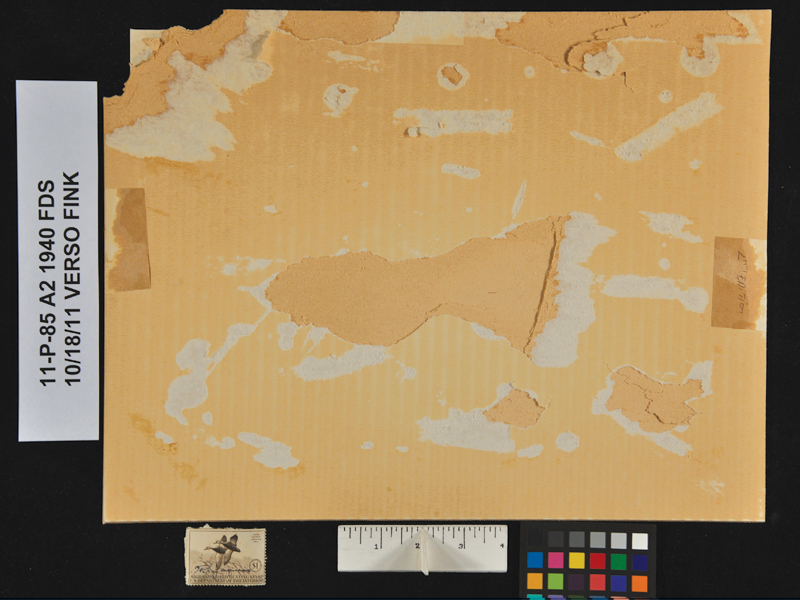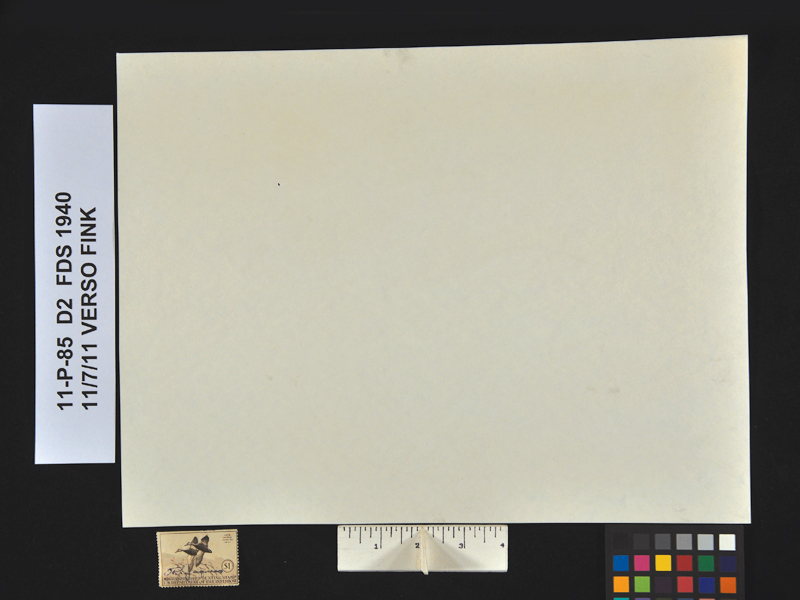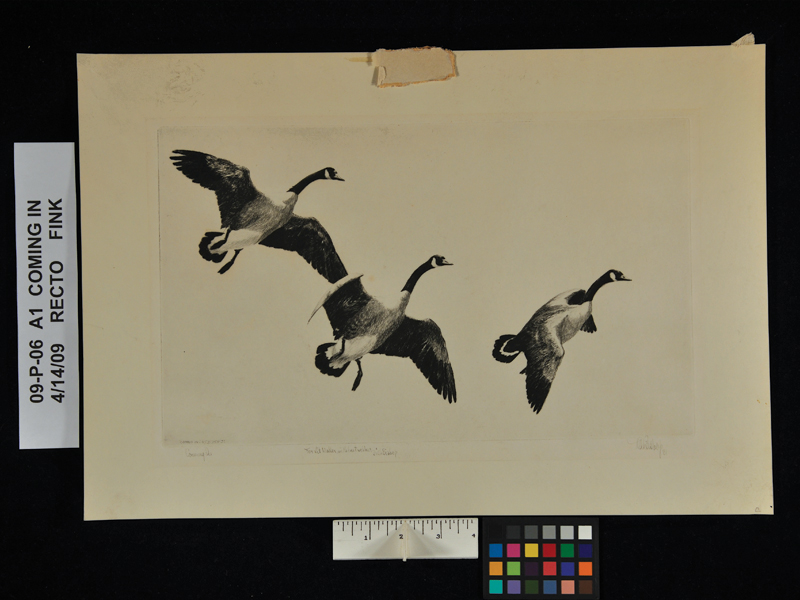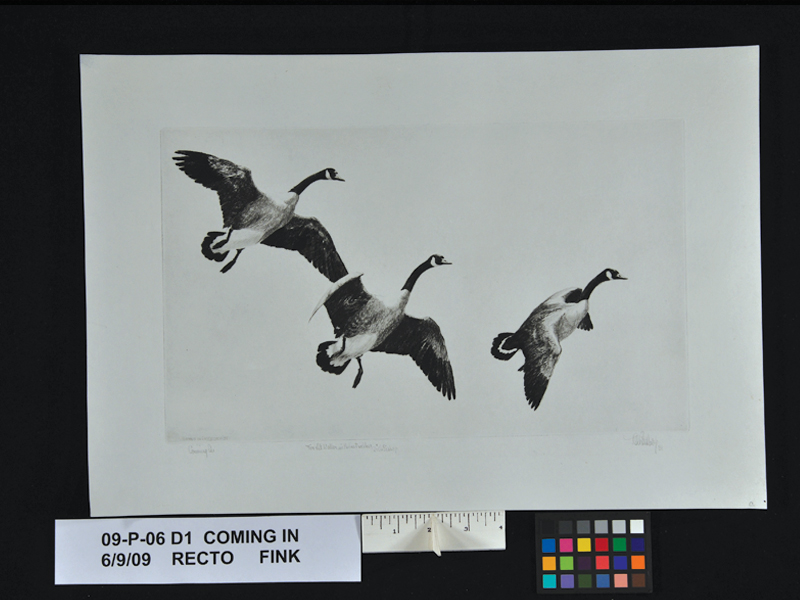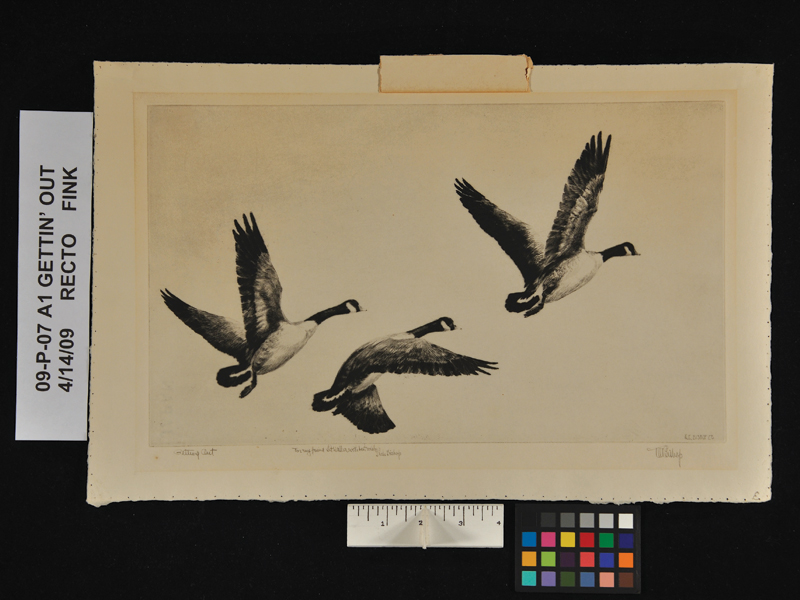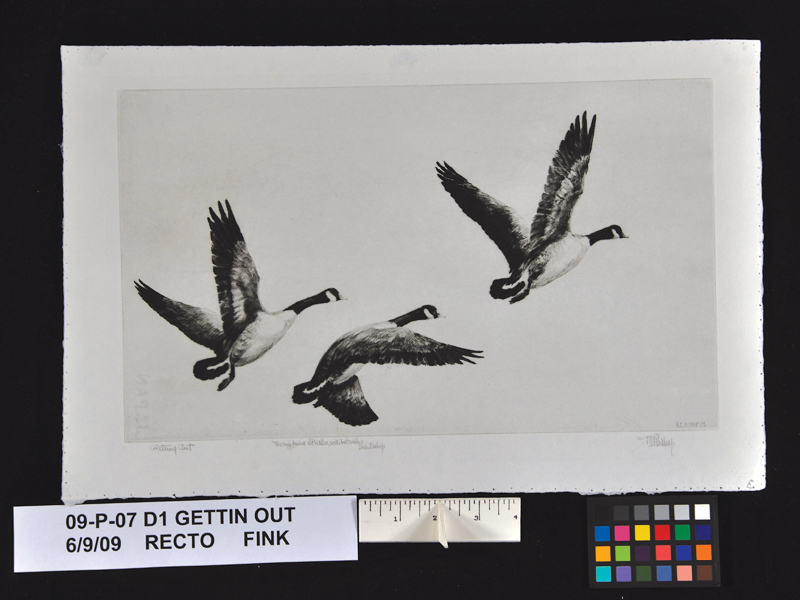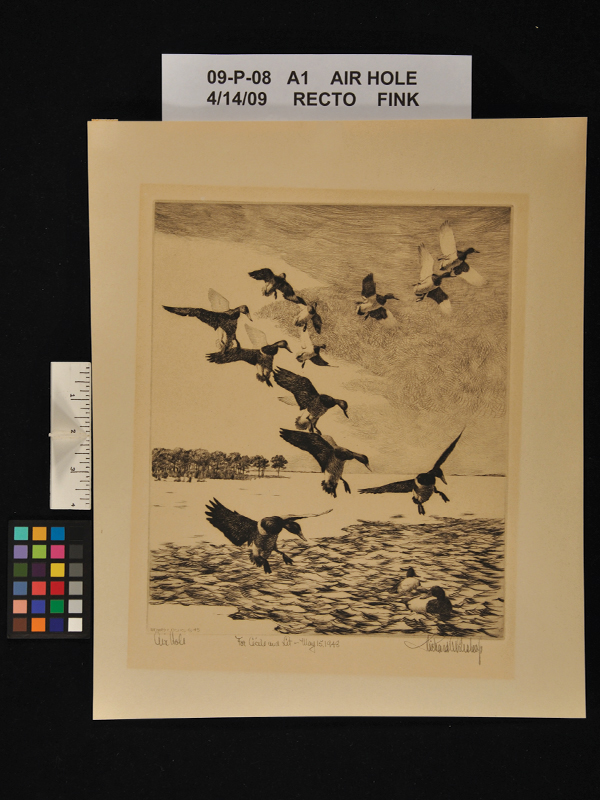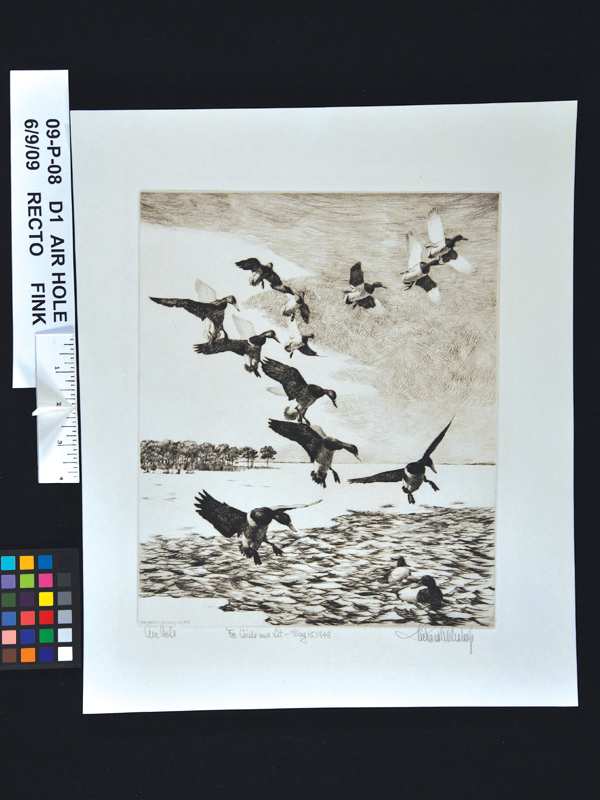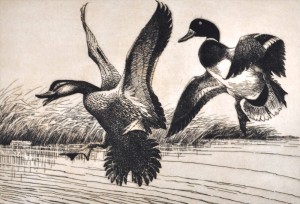 Federal Duck Stamp Prints
Federal Duck Stamp Prints
In 1934, the first duck stamp design was carried out by cartoonist and conservationist, Jay “Ding’ Darling. At the time he was the Chief of the Biological Survey in Washington, DC. The Migratory Bird Hunting Stamp Act was passed in July of 1934 as an effort to collect funds from hunting enthusiasts for the preservation of wetlands.
Following the initial effort by Darling, the Bureau in the ensuing years extended an annual honorary invitation to a select group of prominent wildlife artist in the US for design submissions. The 1949-1950 design was the last for which an “invitation to submit” was extended to a limited group of artists. In early 1950, the Bureau formally announced that any artist, amateur or professional could compete for the annual design process.
In conjunction with the successful duck stamp design award, artists were allowed to create a limited addition of the image for sale. The first print was an etching and up through 1968, the prints were carried out in “fine art printing methods” printed on a good-quality artist paper. In 1968, the prints became mass produced in larger, signed editions using off set color printing and the paper quality corresponded to that type of printing.
I have worked closely with the Russell Fink Gallery for the past 17 years treating a wide variety of the Federal Duck Stamp prints – dating mainly from 1934 to 1972. The work has involved reducing the damage caused by contact with poor-quality framing materials, overexposure to light, unstable environmental conditions, aqueous stains, mold damage, and poor storage conditions.
The most prominent damage comes from well-intentioned framers of the past who used inappropriate framing methods or materials. Acid matboard, dry-mounting tissues, and rubber cement have compromised many prints.
The Russell Fink Gallery has specialized in wildlife and sporting art for 30 years. In addition to original art and sculpture, the gallery carries a wide selection of books, duck stamp prints, etchings, gifts, and limited edition prints. Visit the Russell Fink website.

